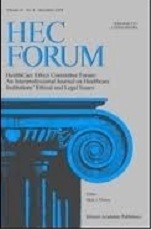Elliott Louis Bedford

Abstract
Abortion is the central issue in the conscientious objection debate. In this article I demonstrate why this is so for two philosophical viewpoints prominent in American culture. One, represented by Patrick Lee and Robert P. George, holds that the fundamental moral value of being human can be found in bare life and the other, represented by Tom Beauchamp and James Childress, holds that this fundamental value is found in the life that can choose and determine itself. First, I articulate Lee and George’s philosophical theory and demonstrate how the fundamental moral value of their theory, personhood, is represented in the issue of abortion. Second, I examine Beauchamp and Childress’ theoretical vision and demonstrate how their fundamental moral value, the right to autonomous selfdetermination, is represented in abortion. Third, I sketch the theoretical and practical dynamics of the conscientious objection debate as well as each author’s understanding of conscience. Fourth, I demonstrate how abortion, which represents their respective fundamental value, shapes each perspectives’ approach to the conscientious objection debate. I conclude that because each theory finds its fundamental value represented in the issue of abortion, each perspective is bound to engage the conscientious objection debate in a way that centers on the issue of abortion.
Bedford EL. Abortion: At the still point of the turning conscientious objection debate. HEC Forum. 2012;24(2):63-82.
